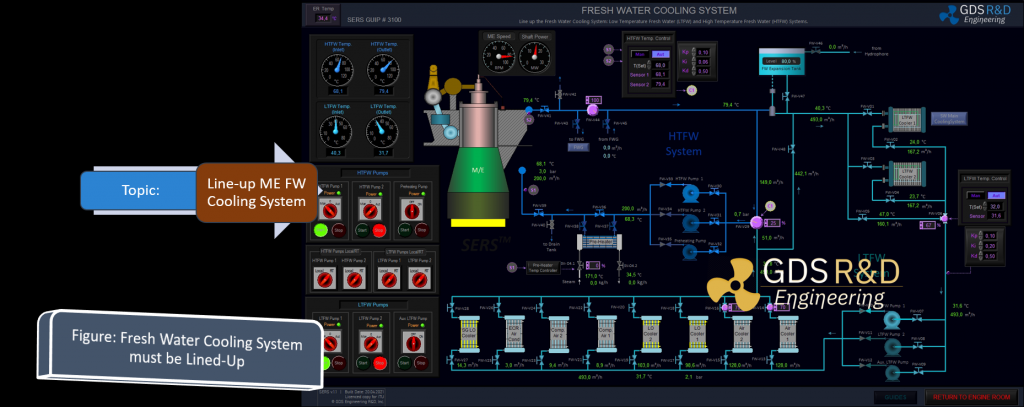Purpose: Exercise the weather effect to engine performance using the Ship ERS. Generate a report with capturing the images using SERS GUI panels and tools provided. Note that this exercise is generated as part of the IMO Model Course 2.07 (2017 Edition) exercises. This training exercise was developed as part of the IMO STCW 2010 Management Level objectives using the Model Course 2.07 guidelines ans steps.
Note: This classroom exercise was provided in this page as an example. Click here to visit the Ship Engine Room Simulator product to read more.
Step 1: ERS is operated in Navigation Mode and Ballast Transfer System is lined up for ballast operations. Draft is Low (i.e. d=9 m.)

Step 2: ME Processes GUI Panel displays the ME Parameters while the draft is increasing. Check Figure 2 for that the the baseline (sea test) data/graphs are displayed. Being able to understand the ME performance graphs are important in this exercise.

Step 3: Ensure the control of the main engine is set to “RPM”.

Step 4: Graphs and Plots GUI Panel displays the trend data for the selected parameters. In this exercise, it is important to plot the draft and ME Power. Additionally, it is important to select the ME Power versus ME RPM in the X-Y plot area to see the ME Power change while the RPM is controlled.

Step 5: Status of the Ballast Tanks and Levels are important to observe.

Step 6: Students should be able to interpret time (trend) and X-Y graphs for this operation, as part of the MANAGEMENT LEVEL exercise objectives.

Step 7: Complete the exercise with noting the ME parameter changes.


